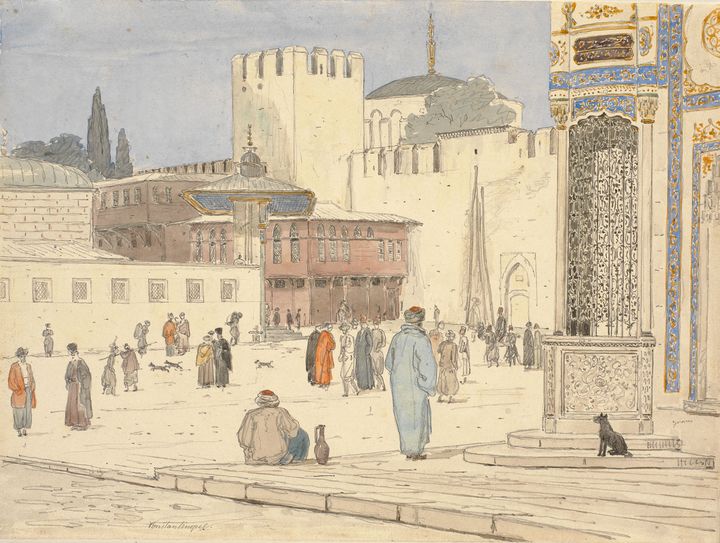Martinus Rørbyes rejsedagbøger
Introduction

Martinus Rørbye (1803–1848) was the most avid traveller among the artists of the so-called Golden Age of Danish art. While his fellow artists were content once they reached Rome, restlessness and an appetite for adventure drove Rørbye on to Greece and Constantinople as well. During his travels, he struggled with ill health and often had to wear the same clothes for weeks, slept on the floor and endured freezing winter temperatures in places where he could not even make himself understood to the local population.
On his travels, Rørbye maintained a daily ritual of journal keeping with astonishing persistence. In both content and frequency, the journal entries reflect his meticulous and serious temperament, which – unfairly – gave him the reputation among the other artists of being a bit of a bore. However, although he is quite harsh in his judgment of his countrymen and fellow artists and always maintained his reserved demeanour in their company, his writings also prove him to be an openminded traveller who viewed foreign milieus with a sympathetic mind.
The preserved journals cover three of Rørbye’s longer journeys. The first was written during a tour of Jutland and Norway in 1830, the second during his grand tour of southern Europe in 1834–37, while the third (taking up two volumes) covers his Italian honeymoon with his wife, Rose, in 1839–41. Although the three journals differ in form, they all reflect Rørbye’s conscientious recording of his travels, work and acquaintances. In fact, the journal from his travels in 1834–37 is probably the most complete source of insight into a Danish artist’s study tour during the first half of the 19th century.
As a supplement to the journal entries, the database also includes all Rørbye’s preserved letters from his travels as well as his bookkeeping and other lists entered into the journals.
Jesper Svenningsen